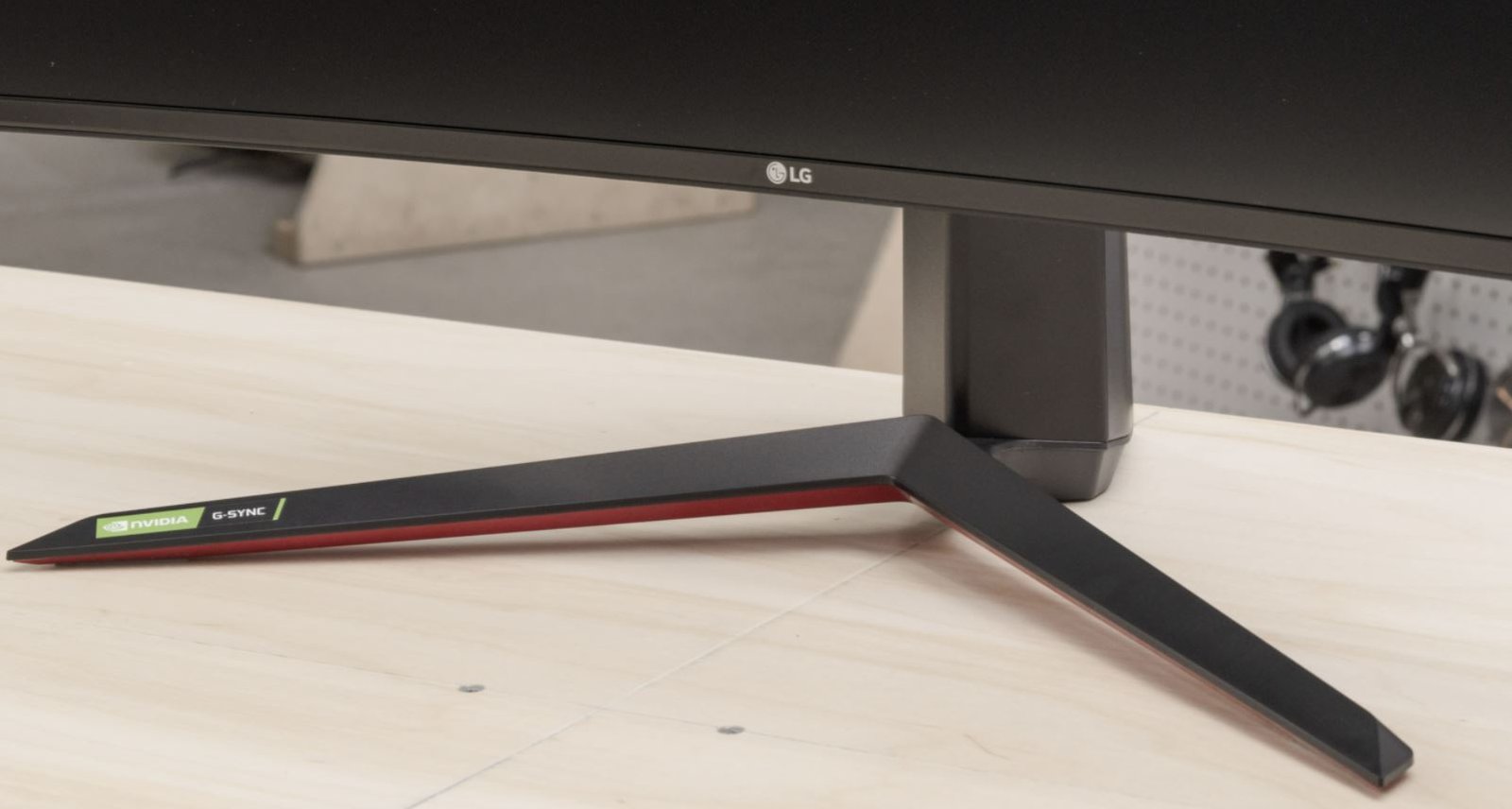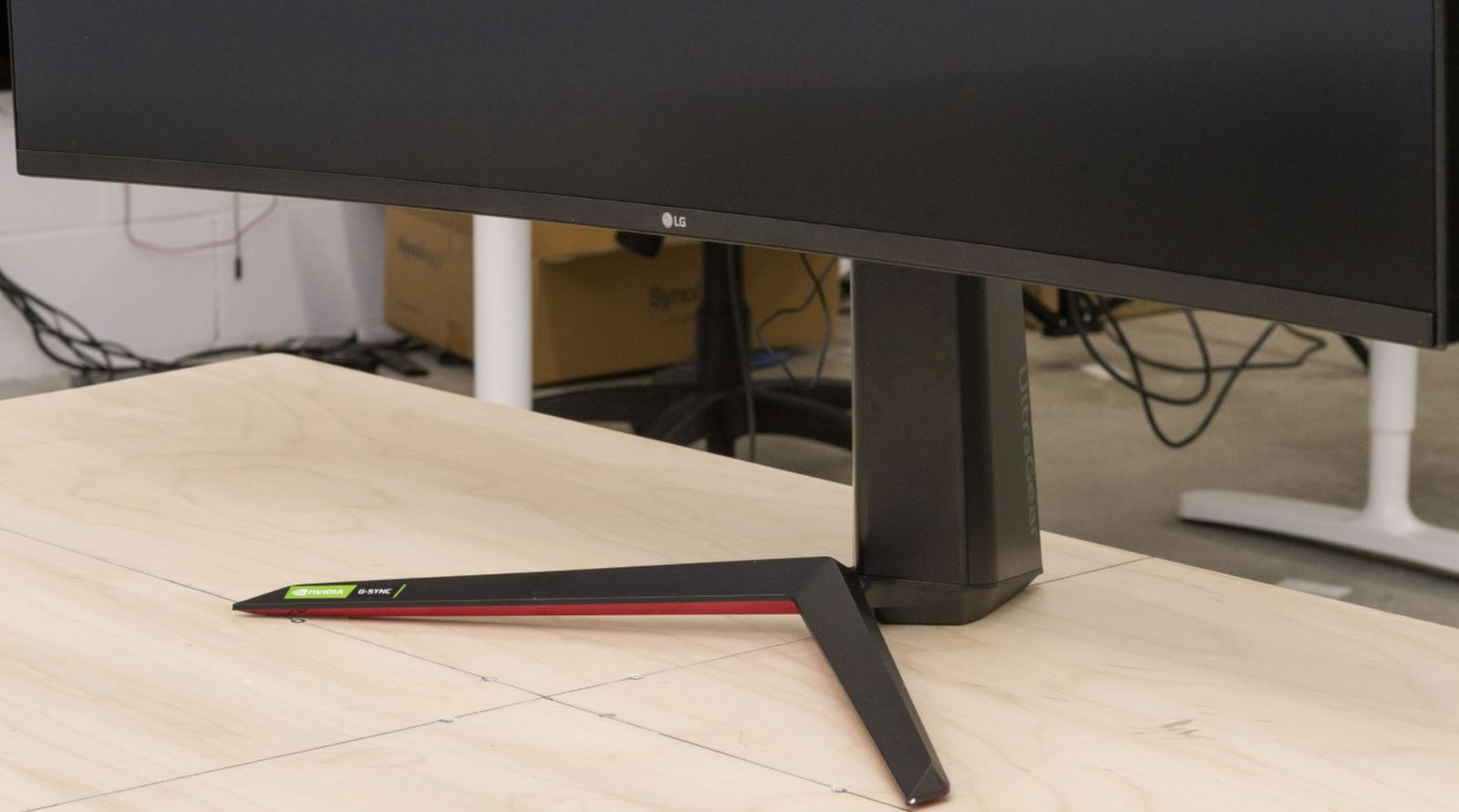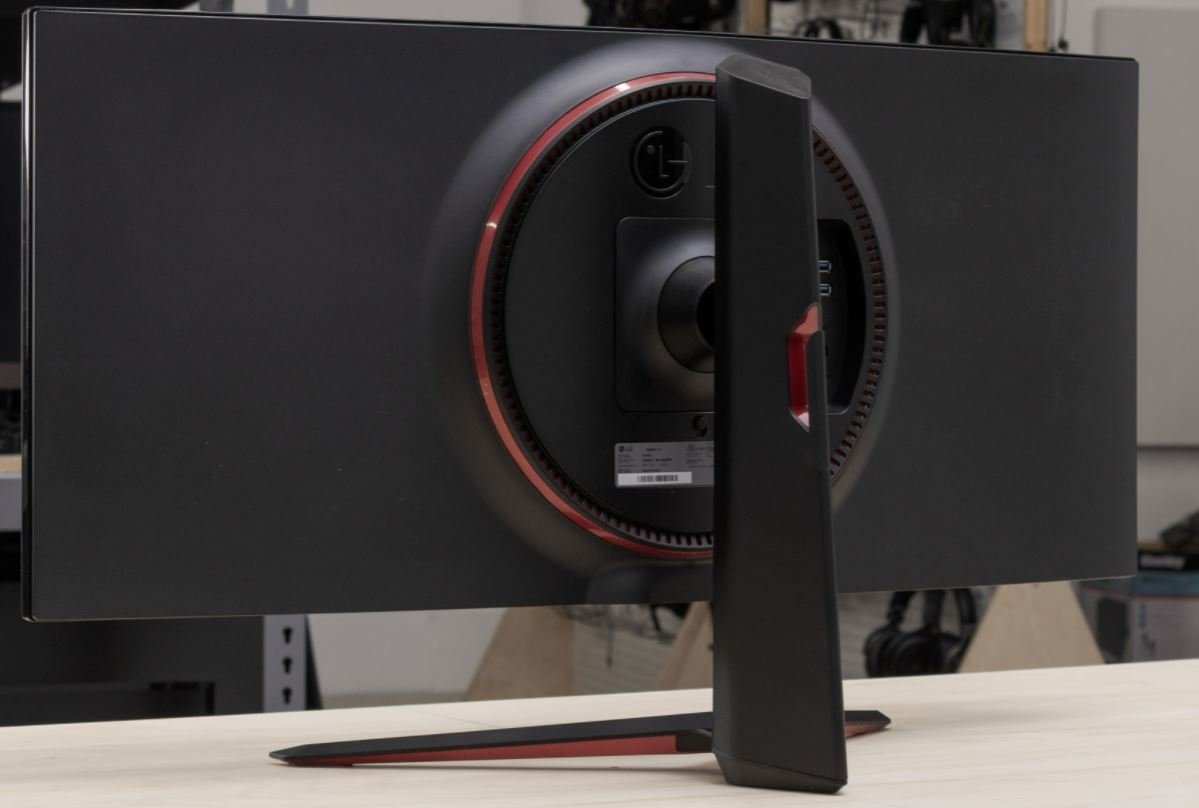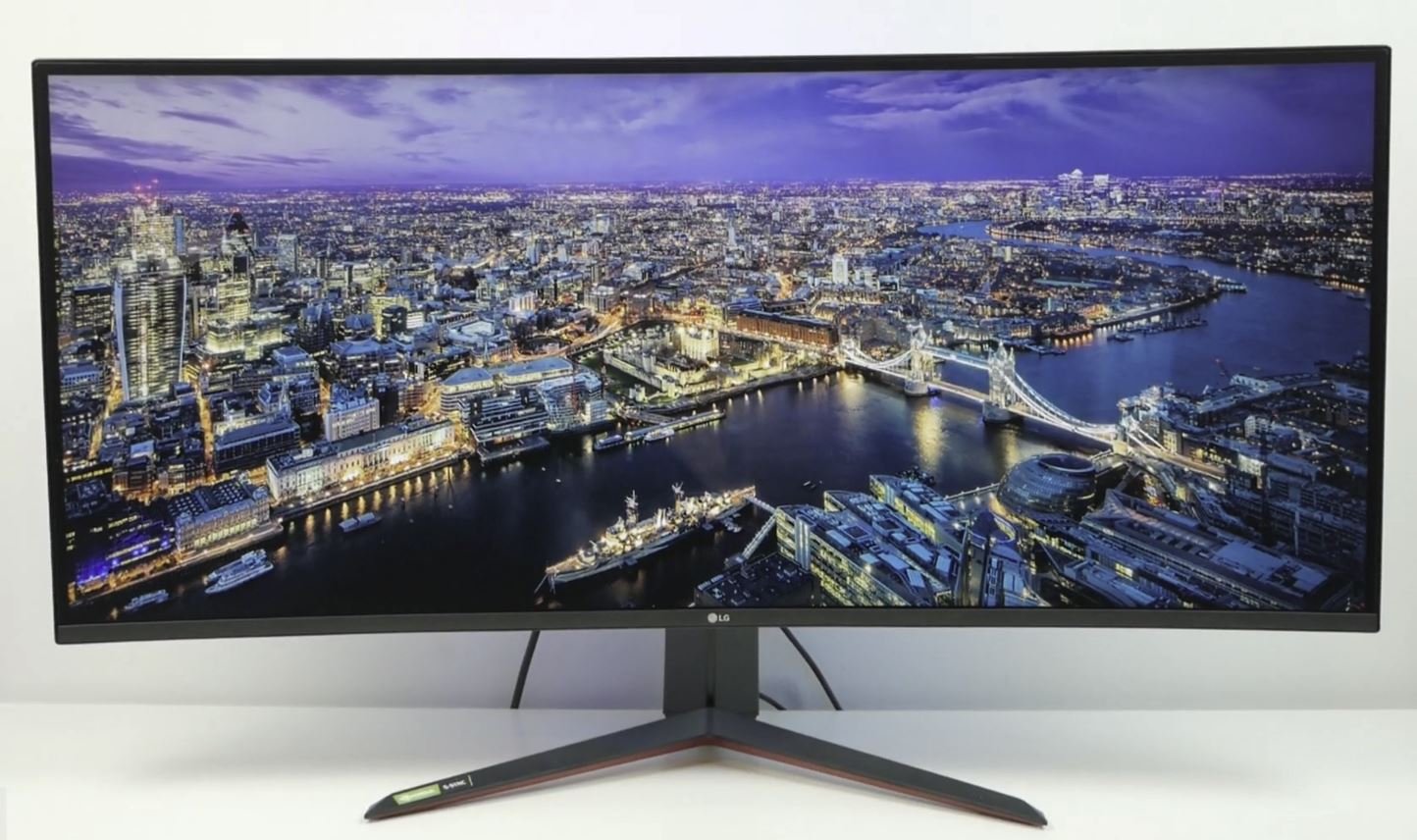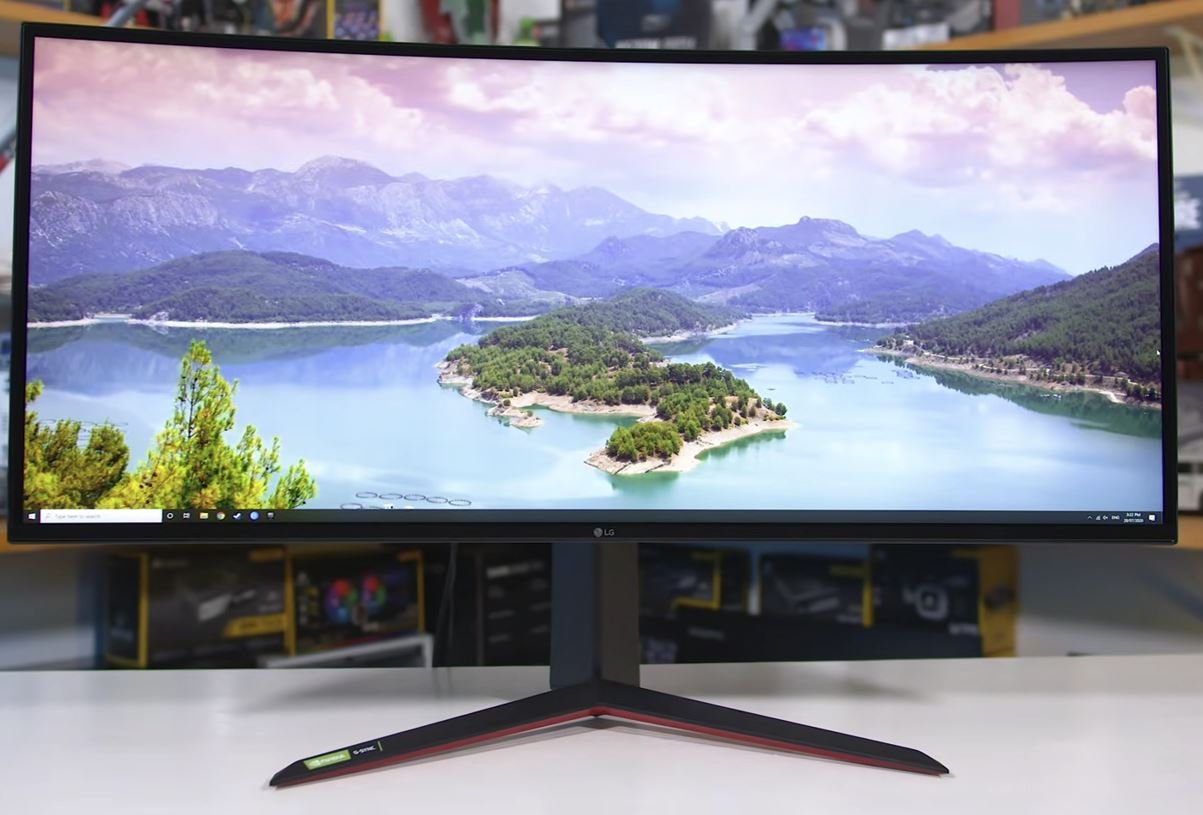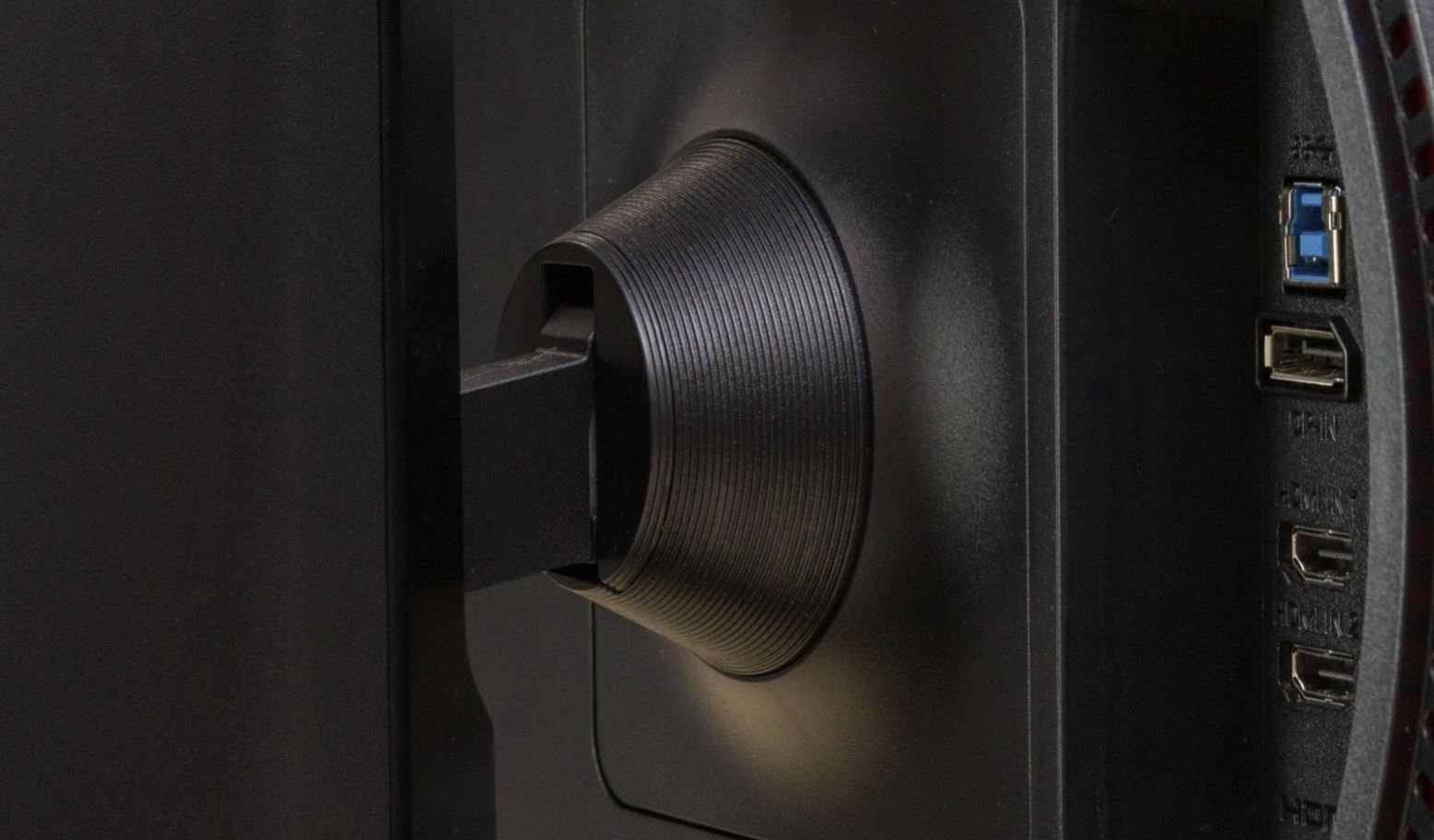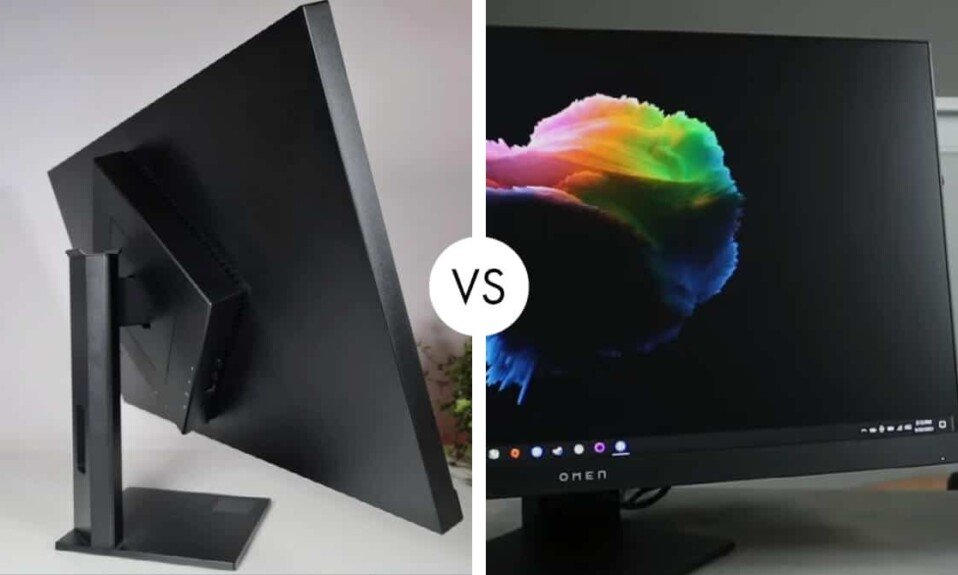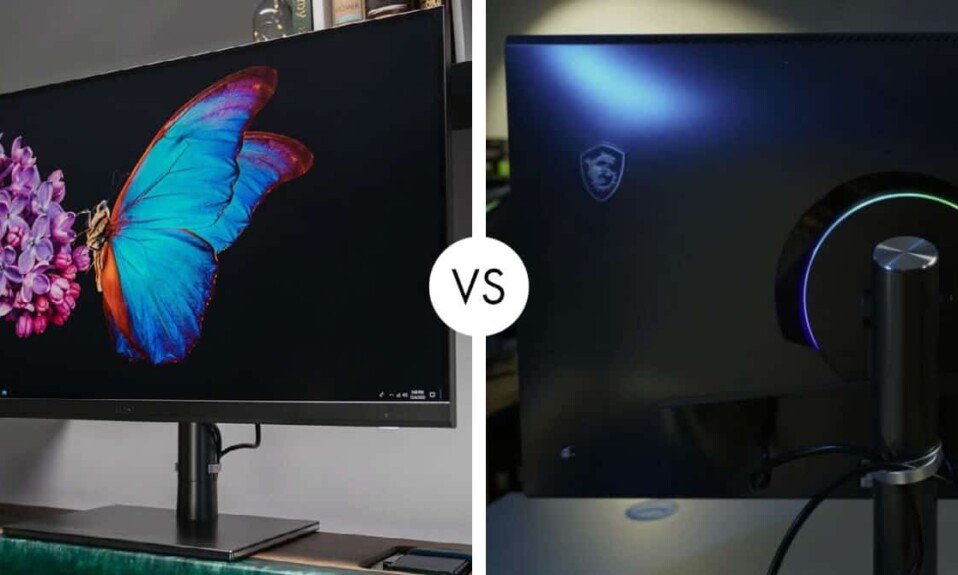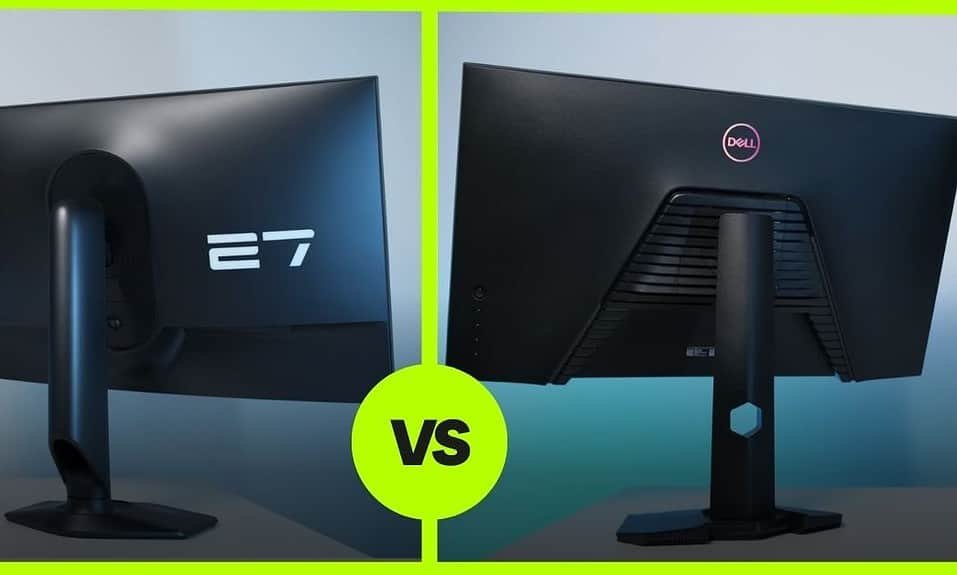LG Electronics was founded in 1958 and has since paved the way for the modern digital age thanks to the technological know-how gained in household appliances, such as B. radios and televisions. LG Electronics introduced many new products, applied new technologies such as: In the mobile devices and digital televisions of the 21st century, and continues to cement its status as an international company.
The LG Ultragear 38GN950 is an excellent gaming monitor with massive, state-of-the-art and costly technology. The 38-inch device in 21: 9 format (1600p) achieves frame rates of 160 Hertz and supports Freesync and G-Sync technology.
The UltraGear 34GN850-B uses a modern IPS panel, 160 Hertz, NVIDIA G-SYNC or AMD FreeSync support and HDR400 is also part of the party.
Pros and Cons
| LG UltraGear 38GN950-B | LG UltraGear 34GN850-B |
| Good gaming performance | Impressive gaming performance |
| 38-inch screen in 21: 9 format | 21: 9 panels with 34-inch diagonal |
| Ergonomic adjustment options | Ergonomic adjustment options |
| High power consumption | High power consumption |
| Expensive | Expensive |
LG UltraGear 38GN950-B- The 37.5- inch curved AH- IPS panel is illuminated by W LEDs with nano-particles, has an aspect ratio of 24:10, has a resolution of 3840 x 1600 pixels, and, according to the manufacturer, should match the DCI-P3 color space Cover 98%. The screen is DisplayHDR-600 certified and offers a variety of functions, especially for gamers. “The gaming monitor of your dreams” is written on the manufacturer’s product presentation page.
The most interesting facts for gamers are 144 Hz refresh rate with overclocking option to 160 Hz, 1 ms image build-up time (GtG), G-Sync compatibility, AMD FreeSync Premium Pro, a Black Stabilizer for an improved black level display, a four-level pixel acceleration for razor-sharp moving images and sphere Lighting 2.0.
LG UltraGear 34GN850-B- The 34GK950F, new 34- inch gaming monitor with a curved display and UWQHD resolution (3440 x 1440 pixels) impresses with a faster response time of 1 ms (GtG), overclocking up to 160 Hz, certified G-Sync compatibility, and power consumption of a maximum of 72 watts lower by half.
Thanks to the Nano- IPS panel with 21: 9 widescreen format, 98% DCI-P3 color space coverage with 10-bit color depth, and DisplayHDR-400 certification, the image quality should again be first class. Also on board with the LG 34GN850-B are the usual numerous gaming functions such as “Dynamic Action Sync” (DAS), Black Stabilizer, crosshairs, and various predefined image modes optimized for gaming.
Specification
| LG UltraGear 38GN950-B | LG UltraGear 34GN850-B | |
| $ | CHECK PRICE | CHECK PRICE |
| Released | August 20, 2020 | April 1, 2020 |
| Brand | LG | LG |
| Panel Type | IPS | IPS |
| Dimension | 896.6 x 551.2 x 287.0 mm | 819.2 x 574.1 x 312.2 mm |
| Weight | 9.2 Kg | 7.6 Kg |
| Screen Size | 38″ | 34″ |
| Resolution | 3840 x 1600 | 3440 x 1440 |
| Aspect Ratio | 21:9 | 21:9 |
| Refresh Rate | 160Hz | 160 Hz |
| Response Time | 1ms | 1ms |
| Adaptive-Sync | G-SYNC, AMD FreeSync | FreeSync |
| Ports | HDMI Yes x 2 USB Down-stream Yes x 2 USB Up-stream Yes x 1 Display Port Yes x 1 | HDMI 2 DisplayPort 1 USB Upstream Port 1 (ver3.0) USB Downstream Port 2 (ver3.0) |
| Built-In Speakers | No Built-in Speaker | No Built-in Speaker |
| Pixels Per Inch | 111 PPI | 110 PPI |
| Brightness | 450cd/m² | 400 cd/m² |
| Contrast Ratio | 1000:1 | 1000:1 |
| Colors | 1.07B | 1.07B |
| Power Consumption | 140W | 80W |
Design
LG UltraGear 38GN950-B- LG has standardized the look of the UltraGear model series, and so the LG 38GN950-B is also presented with a matt black housing and individual red accents. The gaming genes are visually not immediately recognizable, which means that the monitor does not look out of place or unprofessional in an office.
The frame around the display is only about 2 mm wide on three sides, but the screen itself is indented about 5 mm from the edge. At the lower edge of the display, an approximately 12 mm high frame extends over the entire width of the display. The back of the LG 38GN950-B is also kept simple. The RGB LED ring is placed in the middle and encloses the stand holder and the connection panel.
The LG logo is located in the middle of the frame. The logo is only printed in white color. The only high-gloss element of the LG 38GN950-B runs around the side of the entire case in the form of a glossy black frame. At its outer edges, the monitor’s casing is only 2.6 cm thick, but it becomes bulky towards the middle of the case. The wide curved display looks impressive just because of its size.
Red ventilation openings are positioned around the RGB LED ring, which ensure a sporty and elegant look. In general, LG also uses red accents very sparingly in the 38GN950-B.
The LG 38GN950-B is also simmering on the back burner when it comes to ergonomic functions, but this is also the case with the smaller brother LG 34GN850-B and the LG 38GL950G-B, and therefore not surprising. The most necessary ergonomics are offered, primarily a height adjustment of the display. Here the monitor provides a setting range of 11 cm, from a minimum of 9.7 cm to a maximum of 20.7 cm. The mechanics work correctly and precisely. A pivot function would not make much sense in this format, but a lateral rotation function would be ideal.
A setting range of 4 degrees down and 14 degrees up is offered here. That is not a great deal, but it is sufficient in most cases. The mechanics also work perfectly here. To be able to align the screen exactly horizontally, it can be rotated slightly horizontally. However, the subsurface must not be too crooked.
To operate the LG 38GN950-B with the original stand, it must first be mounted. It consists of two parts. The two parts are connected to each other with two wing screws on the underside of the base. On the back of the display housing, the stand then only needs to be snapped into the VESA bracket.
The stand of the LG 38GN950-B is anything but delicate and small. The connection piece to the monitor is also very bulky, with a depth of around 12 cm. In return, the display has a secure stand. Thanks to the anti-slip rubbers on the underside of the base and the high weight, the test person remains safely where he was placed.
To be able to use alternative mounting options, the LG 38GN950-B has a VESA mount on the back of the housing with a hole spacing of 100 mm. The necessary screws for the assembly are already included. The original stand covers the VESA mount.
There is a bulge on the back of the base for cable management. In addition, the position of this cable holder has not been chosen sensibly. But maybe it should just serve the design because it already looks chic.
The LG 38GN950-B has a few ventilation openings. Most noticeable are those on the top of the case, as they are colored red. There are further openings around the RGB LED ring, also in a red accent color, and on the underside of the housing. Since the monitor has an external power supply and LEDs generate little heat, many ventilation openings would probably not have been necessary. The manufacturer may play it safe.
LG UltraGear 34GN850-B- With a matt black housing and a few red accents, the LG 34GN850-B is visually somewhat restrained for a gaming monitor. By no means terrible quality, as there is a demand for gaming displays with a less intrusive design.
The curved display only has a very narrow frame. The case back of the test subject is made of matt black plastic and looks very tidy. Color accents are used sparingly and convey a hidden, sporty elegance. Visually, one cannot immediately assume that the LG 34GN850-B is a high-end gaming monitor.
The frame on the underside of the display is around 11 mm high. The LG logo is positioned in the middle here, but is not particularly noticeable. A high-gloss black frame runs around the side of the case. The case is only about 20 mm thick on the left and right-hand side and becomes bulbous towards the middle. Here it is then 35 mm thick. The circle in the middle, where the stand holder and connections are positioned, is another 30 mm. Overall, the case remains quite thin and does not make the LG 34GN850-B appear bulky despite its size.
Red color accents can be found in a circle on the back of the case, in the recess for the cable management on the back of the stand, and on its underside.
The LG 34GN850-B is also cautious when it comes to ergonomic functions. Only a height adjustment and a tilt function are offered. There is no possibility of lateral rotation (swivel) and a pivot mode. While a sideways rotation has a practical use, the question of whether pivot would really make sense on a curved display is entirely justified.
The height adjustment of the LG 34GN850-B offers a good adjustment range of 10 cm. In the lowest position, we measure 11.2 cm from the lower edge of the display to the desk. In the highest position, the distance is 22.2 cm. The mechanics work very precisely.
The control range of the display inclination (tilt) of up to 4.8 degrees downwards and 15.8 degrees upwards is not particularly large, but sufficient. Here, too, the mechanics work very precisely.
The stand of the LG 34GN850-B consists of two parts. The two parts are connected to one another with two screws that do not require any tools. There are three rubber inserts on the underside of the stand that are intended to prevent the monitor from slipping.
A span of 45 cm and depth of 31 cm, the stand of the LG 34GN850-B takes up a lot of space on the desk, but also offers the display a secure and firm stand. The V-design stand looks from the front not that bulky, but the connection piece to the screen is anything but filigree with almost 12 cm in the lower area.
The cable management solution of the LG 34GN850-B is very minimalistic. It works in principle, and a few cables can be placed in this recess, but you have to be careful not to break the pen because it does not look remarkably stable.
LG 34GN850-B ventilation openings are arranged in a circle on the case’s back, as is already known from some of the previous models, and backed by a red plastic insert. Visually one of the most excellent solutions to attach ventilation openings that also look good. The external power supply unit and the LED backlighting mean that there is not much heat in the case.
Display
The 38GN950-B uses a screen from our production. This is a 37.5- inch curved AH- IPS panel with a 2.3 m radius (2300 R). It has an aspect ratio of 24:10 and has a resolution of 3840 x 1600 pixels. W-LED with nano-particles is used as background lighting, which achieves a 10-bit color depth and, according to the manufacturer, 98% DCI-P3 color space coverage.
Without a doubt, the subjective image quality of the LG 38GN950-B is again excellent. Since the DCI-P3 color space is around 30% larger than the sRGB color space, higher color saturation is achieved, expressed in brilliant color rendering. The not so strong display curvature has a positive effect on the use of the monitor outside of games but offers a sufficiently immersive experience. The 24:10 image format means that more vertical pixels are available. This has advantages in that many applications or websites still orient their content vertically.
Another unique feature offered by the LG 38GN950-B is a local dimming of the backlight. The factory setting is “Automatic”; further options are “On” and “Off.” Subjectively, there is initially no discernible difference between the different settings, but we will go into more detail in the “DVD and Video” chapter.
As with all screens from the UltraGear series, the picture mode “Player1” is preset on the LG 38GN950-B at the factory. All OSD options are available in this picture mode and “Player2”. This means that two presets can be set individually in full. The factory setting has already been chosen very well, at least subjectively. Merely the brightness of 80% (385 cd / m² ) is set too bright in most cases. In addition to the two picture modes mentioned, there are also “FPS”, “RTS”, “Lively”, “Reader”, “HDR” Effect” and “sRGB” to choose from. Since the test person is DisplayHDR-600 certified, he achieves a luminance of 469 cd / m² with maximum background lighting.
The 38 inch LG 38GN950-B gaming monitor from the UltraGear model series has a curved display with a 24:10 format. The native resolution is 3840 x 1600 pixels (UWQHD +) and allows a maximum frame rate of 144 Hz.
Adaptive Sync (FreeSync Premium Pro, G-Sync Compatible)- The synchronization of the frames (pictures) supplied by the graphics card and the monitor’s refresh rate is one of essential functions in gaming. It prevents the display from tearing horizontally, also known as tearing, and reduces stuttering. The result is a smooth reproduction of moving images.
If a monitor can serve both worlds, ie, FreeSync in combination with an AMD graphics card and G-Sync with an NVIDIA graphics card, the term “Adaptive Sync” has become established. The LG 38GN950-B supports FreeSync Premium Pro and is verified by NVIDIA G-Sync-Compatible. In contrast to native G-Sync, where a module built into the screen ensures synchronization, G-Sync Compatible is achieved via the graphics card driver. In addition, at least one graphics card from the GeForce GTX 1000 series or higher must be used.
For G-Sync compatibility to work appropriately on the LG 38GN950-B, driver version 441.41 or higher must be installed.
The LG 34GN850-B comes with a 34 inch large IPS panel with a 1900-R-bending radius and a 21: 9 aspect ratio. The resolution is 3440 x 1440 pixels (UWQHD), and according to the manufacturer, the DCI-P3 color space should be covered to 98%. Subjectively, the color reproduction looks more brilliant compared to sRGB but is not as colorful as with Adobe RGB – actually the perfect middle ground, which brings advantages in all areas of application.
The factory setting of the LG 34GN850-B already looks excellent subjectively. The large display is impressive with rich, brilliant color reproduction and a high-contrast display inspire. The moderate curvature of the panel is an advantage for the general use of the monitor because as casual a strongly curved display is in gaming, it is annoying with construction drawings because straight lines are subjectively perceived with a slight curvature. As is so often, only the brightness of 100% (corresponds to 410 cd / m²) is preset to much too bright in most cases. But reducing the luminance is done quickly – and then you can start.
As is known from LG’s gaming monitors, in addition to some image modes specially optimized for gamers, many additional functions are available that can provide advantages when gaming. The picture mode “Player 1” is preset at the factory. All OSD options are available in this and the “Player 2” picture mode and can be individually adjusted. The LG 34GN850-B remembers the different settings, including those in the “Image adjustment” menu. The game settings are also fully available in the “FPS” and “RTS” picture modes, but the picture adjustments are limited. Here only brightness and contrast can be adjusted. Other pre-defined picture modes are “Alive”, “Reader”, ” HDR Effect” and “sRGB”.
The picture quality is excellent in all picture modes. Color and gray gradients are always displayed without streaks. Not all levels indicated in the upper color range for individual picture modes for blue, red, magenta, and cyan are only in the color level test. In the “Game Settings” and “Image Adjustment” menus, extensive setting options are available that leave nothing to be desired in gaming and image processing. It is gratifying that the brightness can be adjusted in the “sRGB” image mode.
The 34- inch LG 34GN850-B gaming monitor from the UltraGear series has a curved display with a 21: 9 format. The native resolution is 3440 x 1440 pixels (UWQHD) and allows a maximum frame rate of 144 Hz.
Adaptive-Sync (FreeSync Premium, G-Sync Compatible)- Until now, you had to make a decision and adapt the monitor to the graphics card used or vice versa because the two technologies for reducing tearing are different. In conjunction with an AMD graphics card, the monitor had to support FreeSync, in the case of an NVIDIA graphics card, G-Sync. It gets annoying when you change the graphics card manufacturer but still want to keep the screen.
To use G-Sync with the LG 34GN850-B, it must be at least driver version 442.16 or higher. In contrast to G-Sync-compatible monitors, which guarantee vertical synchronization over the entire frequency range thanks to a built-in NVIDIA processor, G-Sync-compatible monitors must use the graphics card driver. In addition, the frequency range is limited. According to the datasheet, vertical synchronization starts at 48 Hz / fps on the LG 34GN850-B.
Connectivity
LG UltraGear 38GN950-B- All connections on the backside. These are sunk into the housing to the right of the VESA bracket. The interfaces are aligned horizontally to the rear, which is not ideal for wall mounting. On the other hand, the connections are easier to reach when using the original stand than if they were oriented downwards.
The LG 38GN950-B has a DisplayPort connection, two HDMI and two USB 3.0 interfaces with a USB 3.0 upstream port, and a headphone output with a 3.5 mm jack.
The external RGB-LED lighting of the LG 38GN950-B extends in a circle around the VESA bracket and the connection panel. The lighting can be activated and the desired lighting effect selected using the rotary knob on the underside of the housing. There are a few lighting modes to choose from.
LG UltraGear 34GN850-B- All connections are located on the back of the housing and are aligned horizontally to the rear. A somewhat atypical alignment and sometimes annoying when mounted on a wall. In return, all interfaces are easy to reach. In addition to a DisplayPort and two HDMI inputs, there is a USB 3.0 hub with two ports and a headphone output.
Conclusion
The new LG 38GN950-B is convincing across the board and shows improvements in some areas compared to its predecessor, the LG 38GL950G-B. But one after the other.
The excellent image quality has remained the same, but it would be difficult to improve it anyway. The DCI-P3 color space and AH- IPS panel also displayed brilliant colors on the LG 38GN950-B. A good setting is already convincing ex-works, and the sRGB image mode is also well pre-calibrated and barely misses a perfect rating. This means that the holiday photos can be edited in true color even without an available calibration device. After profiling and calibration to the sRGB specifications, the test subject achieved an excellent result and is recommended for the EBV in this color space. A real advantage for daily work is the 24:10 image format, as more pixels are available in height.
The gaming performance has also stayed the same, but it was also at the highest level in the other candidates. The LG 38GN950-B can be overclocked to 160 Hz, verified by NVIDIA G-Sync Compatible, and is currently one of the fastest displays on the market regarding response time and input lag. At 144 Hz, the input lag is 1 ms, and with the fastest pixel acceleration, the monitor only needs 1.2 ms for a gray change (GtG) and an incredibly short 0.5 ms for a color change (CTC). And the most important thing is: These values can be played without having to accept too significant a loss in image quality.
The power consumption of the LG 38GN950-B has been improved – and indeed significantly – compared to the 38GL950G-B of the same size. While the predecessor allowed itself a maximum of 88 watts, the 38GN950-B only has 68 watts. At 140 cd / m², the power consumption is 32.5 watts, whereas the previous model consumed 51 watts. However, we cannot say with certainty whether the significantly lower power consumption is due to the missing native G-Sync module.
Movie buffs will be pleased that the LG 38GN950-B offers 24 Hz support. That was not the case with the predecessor. In addition, the test model is DisplayHDR-600 certified and offers local dimming, which is also missing in the predecessor. Unfortunately, the current test subject does not have an overscan function, which means that the full potential cannot be exploited with external playback.
The ergonomic functions of the LG 38GN950-B are also economical, and the expansive stand requires a lot of space on the desk. But the monitor has a VESA bracket, so alternative mounting options can also be used. In terms of color purity, the display can only do satisfactorily, but the brightness distribution is good.
The new LG 34GN850-B gaming monitor from the UltraGear series. The LG 34GN850-B uses a 34-inch curved nano IPS panel (AH-IPS) with 21: 9 widescreen format and UWQHD resolution (3440 x 1440 pixels) from our production. A brilliant color rendering is already convincing in the factory setting. The refresh rate is 144 Hz and can be increased to 160 Hz via overclocking.
The LG 34GN850-B supports both AMD FreeSync and NVIDIA G-Sync with Adaptive Sync. FreeSync Premium is supported in detail, and the test person is officially certified by NVIDIA as G-Sync compatible. For G-Sync to work, however, a GeForce GTX 1000 series graphics card or newer must be used and the NVIDIA graphics card driver 442.16 or later installed. Tearing is reliably eliminated from 48 to 160 frames, and stuttering also only occurred very sporadically in our test.
A particular highlight of the LG 34GN850-B is the extremely low input lag of 1 ms at 144 Hz. Although other gaming monitors have already achieved this value, the current test subject is currently one of the fastest for the average deals for the moderate overall latency Panels on the market.
The LG 34GN850-B delivered another surprise with the excellently emulated sRGB image mode. This is so perfectly factory-calibrated that only the brightness needs to be set – we recommend level 24 – and you can start editing the image. In general, the factory settings are perfect, which is by no means a matter of course for a gaming monitor. The sRGB color space is covered 100%, DCI-P3 91%, and Adobe RGB 85%. The excellent result in color purity is a unique feature that is also a genuine asset in image processing. The brightness distribution is only satisfactory, but the test subject barely missed an excellent overall rating.
With modern connections, the LG 34GN850-B is very flexible. In addition to a DisplayPort 1.4 and two HDMI 2.0 inputs, a USB 3.0 hub with two ports and headphone output are available. The power supply is implemented via an external power supply unit. The LG 34GN850-B is more energy efficient by half than its predecessor. According to the datasheet, the maximum power consumption is 72 watts, whereas the predecessor mentioned 140 watts. Our measurements showed a power consumption between 24 watts (0% brightness) and 59 watts (100% brightness).

